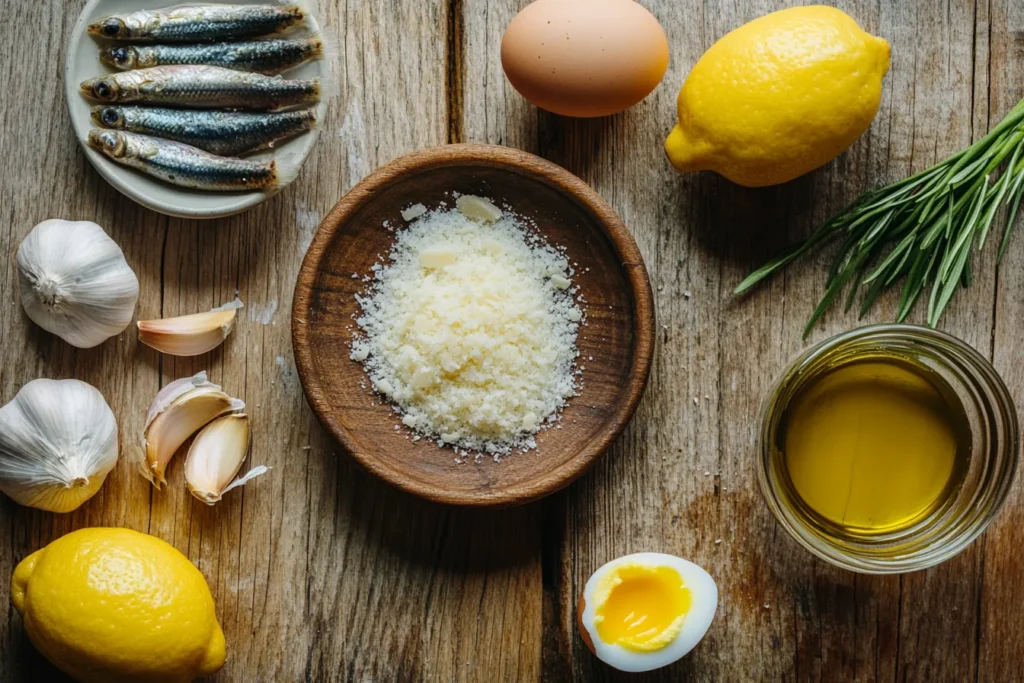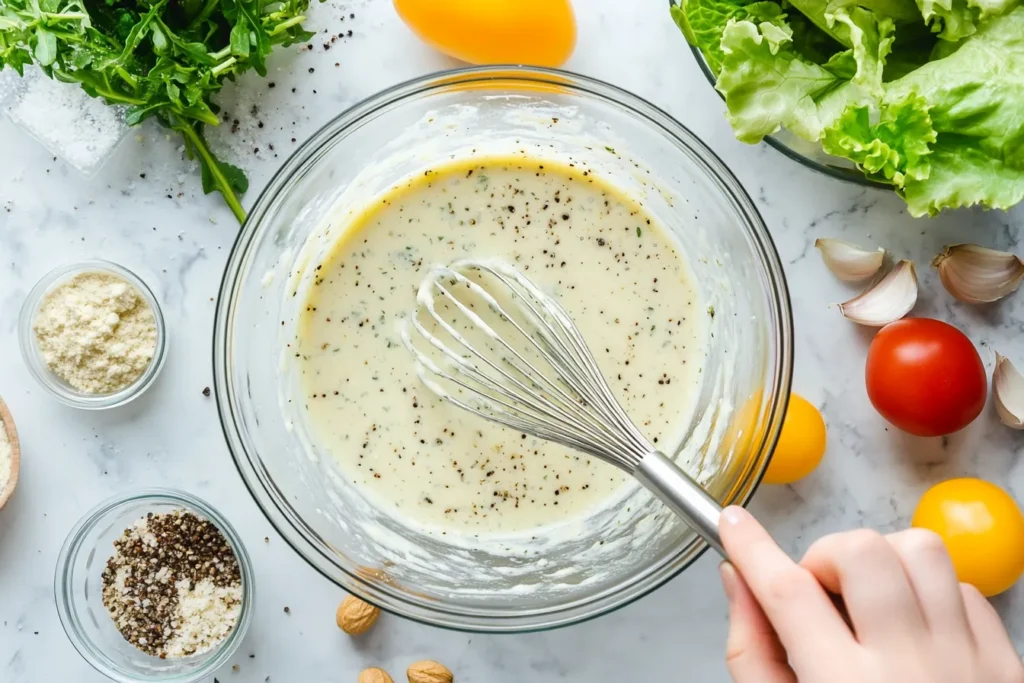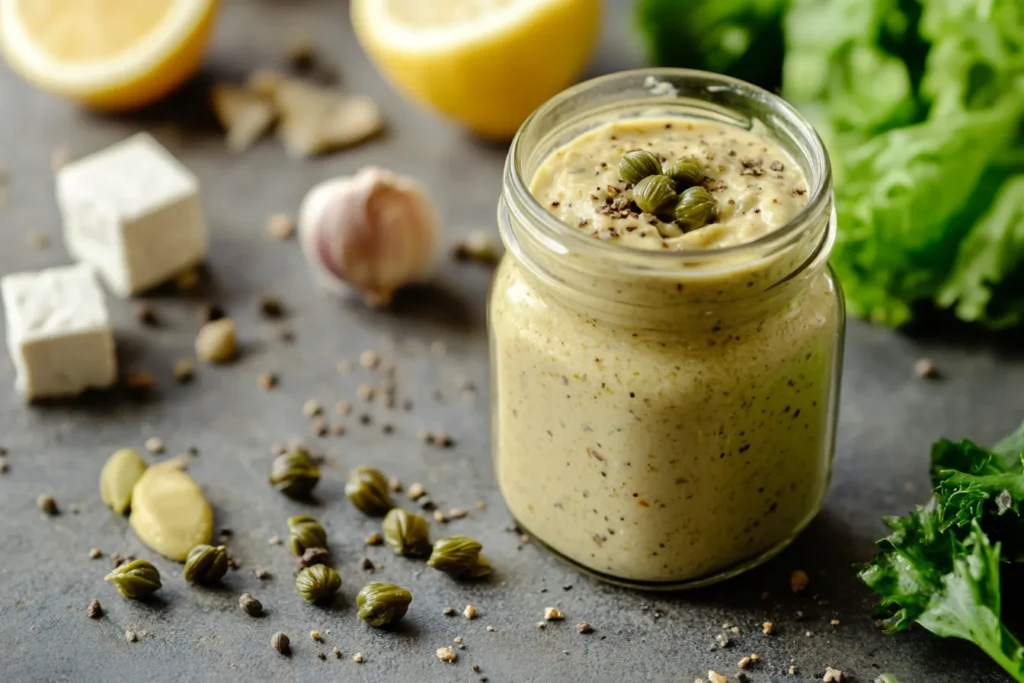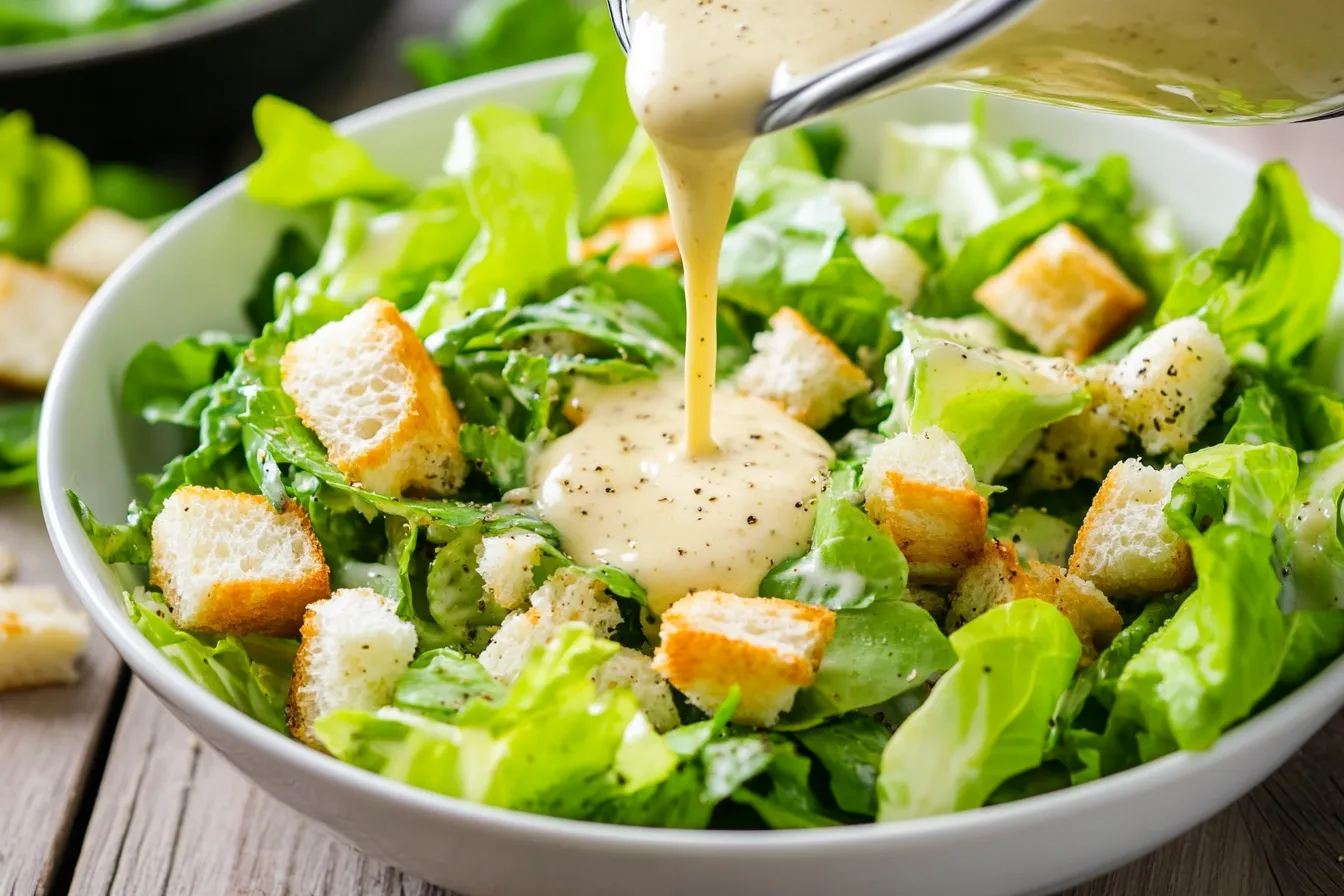Introduction
Caesar salad is a timeless favorite, but what truly makes it unforgettable is the dressing. While store-bought bottles offer convenience, nothing compares to the fresh, zesty, and creamy flavor of homemade Caesar dressing. Making it from scratch not only enhances the taste but also gives you control over the ingredients—no preservatives, no mystery oils, and absolutely customizable to your liking.
In this post, you’ll learn how to make the best Caesar dressing at home using simple pantry staples. Whether you’re a salad enthusiast, meal prepper, or foodie on the hunt for restaurant-quality flavor, this guide has you covered. We’ll walk you through the classic recipe, tips for variations, storage advice, and everything in between..Cottage Cheese Pasta Sauce
Let’s dive into the creamy world of homemade Caesar dressing!
What Is Caesar Dressing?
The History of Caesar Dressing
Caesar dressing was created in the 1920s by Italian-American restaurateur Caesar Cardini in Tijuana, Mexico. Interestingly, it wasn’t originally made with anchovies—the flavor came from Worcestershire sauce and Parmesan cheese. Over time, anchovies became a key ingredient for depth and umami, helping to form the version we know today..High Protein Pasta Salad
Why Make It at Home?
Store-bought Caesar dressings can be overly processed, too salty, or lack the creaminess that defines the homemade version. Making it at home offers several advantages:
- Freshness: No preservatives or artificial additives.
- Flavor control: Adjust garlic, anchovies, lemon juice, and Parmesan to your taste.
- Texture: Achieve the perfect consistency—thick, smooth, and pourable.
- Healthier Ingredients: Use heart-healthy oils, skip raw egg yolks if desired, and reduce sodium.

Key Ingredients in Homemade Caesar Dressing
Anchovies (or Anchovy Paste)
Anchovies add that signature salty, umami-rich base. Don’t worry—they won’t make your dressing “fishy.” If you’re hesitant, try using anchovy paste for a milder taste.
Garlic
Fresh garlic adds bite and depth. Grating or mincing it ensures even distribution.
Dijon Mustard
Adds tang and helps emulsify the dressing.
Egg Yolks or Mayo
Classic recipes use raw egg yolks for richness, but pasteurized eggs or high-quality mayonnaise are safer options..Trader Joe’s Tomato Burrata Ravioloni with Spicy Vodka Sauce
Lemon Juice
Provides a bright, citrusy kick that balances the dressing’s richness.
Parmesan Cheese
Adds saltiness, creaminess, and umami. Use freshly grated for the best flavor.
Olive Oil
Creates the creamy emulsion. Use light olive oil for a more neutral taste or extra virgin for a bold finish.
Worcestershire Sauce
Adds complexity and a little sweetness.
Salt and Pepper
Essential for balancing all the flavors.

Step-by-Step Caesar Dressing Recipe
Ingredients List
- 1 garlic clove, finely minced or grated
- 2 anchovy fillets or 1 tsp anchovy paste
- 1 tsp Dijon mustard
- 1 tsp Worcestershire sauce
- 2 tbsp lemon juice (freshly squeezed)
- 1 egg yolk or 2 tbsp mayonnaise (for egg-free version)
- ½ cup light olive oil or neutral oil
- ¼ cup grated Parmesan cheese
- Salt and freshly ground black pepper to taste
Instructions
- In a mixing bowl, combine garlic, anchovies, mustard, and Worcestershire sauce.
- Add lemon juice and egg yolk (or mayo) and whisk to combine.
- Slowly drizzle in the oil while continuously whisking to emulsify.
- Stir in grated Parmesan, then season with salt and pepper.
- Taste and adjust for lemon, salt, or cheese as needed.
Blender Method (Quick & Easy)
You can also throw all the ingredients into a blender or food processor for a smooth and consistent texture in under a minute.
Customizing Your Caesar Dressing
No-Egg Version
Replace egg yolk with mayonnaise or Greek yogurt for a safe and creamy alternative.
Vegan Caesar Dressing
Use capers instead of anchovies, plant-based mayo, nutritional yeast instead of Parmesan, and skip Worcestershire or use a vegan alternative.
Spicy Caesar Dressing
Add a pinch of red pepper flakes or a dash of hot sauce to give it a kick.
Light Caesar Dressing
Use low-fat Greek yogurt and reduce oil for a lighter calorie count.
How to Use Caesar Dressing Beyond Salad
In Wraps or Sandwiches
Spread it inside a grilled chicken wrap or use it as a tangy sandwich spread.
As a Veggie Dip
Caesar dressing makes a great dipping sauce for celery, carrots, and roasted cauliflower.
Pasta Salad
Toss it with cooked pasta, cherry tomatoes, and greens for a Caesar-inspired pasta salad.
Storage Tips and Shelf Life
Store your homemade Caesar dressing in an airtight jar or container in the fridge. It will keep for up to 5 days. If using raw eggs, consume within 3 days and always use pasteurized eggs to be safe.
Signs of Spoilage
- Sour or off smell
- Separation that doesn’t emulsify when shaken
- Mold or discoloration
Nutritional Information (Per 2 Tbsp Serving)
- Calories: ~120
- Fat: 13g
- Protein: 1g
- Carbs: 1g
- Sodium: ~300mg
(Values may vary based on specific ingredients used.)
External Resources for Further Reading
- How to Emulsify Salad Dressings – Great guide on emulsification techniques.
- Worcestershire Sauce: What Is It? – Learn more about this underrated dressing ingredient.
- The Truth About Anchovies – Understand their role in Caesar dressing.

Frequently Asked Questions
Can I make Caesar dressing without anchovies?
Yes! You can omit anchovies or substitute with capers or extra Worcestershire sauce for similar umami flavor.
How do I make Caesar dressing thicker?
Add more cheese or use less oil. Blending helps thicken it as well.
Is Caesar dressing gluten-free?
Most ingredients are naturally gluten-free, but double-check your Worcestershire sauce and cheese.
Can I freeze Caesar dressing?
It’s not recommended as the emulsion may break when thawed, affecting texture and flavor.
What oils are best for Caesar dressing?
Use a neutral oil or light olive oil. Extra virgin olive oil can overpower the dressing.
Can I use pre-grated Parmesan?
For best results, use freshly grated Parmesan. Pre-grated often has additives and less flavor.
Conclusion
Homemade Caesar dressing is incredibly easy to make and packs a punch of flavor that’s far superior to any bottled version. With just a few fresh ingredients and a whisk, you can create a creamy, savory, and zesty dressing that turns a simple salad into a show-stopping meal. Whether you’re aiming for classic, light, or vegan—there’s a version for everyone.
Ditch the store-bought stuff and enjoy the satisfaction of making your own Caesar dressing at home!

Name: Homemade Caesar Dressing
Ingredients
Equipment
Method
- Instructions:
- In a bowl, whisk together garlic, anchovies, Dijon mustard, Worcestershire sauce, and lemon juice until well combined.
- Add the egg yolk (or mayo) and whisk until smooth.
- Slowly drizzle in the oil while whisking constantly to emulsify the dressing.
- Stir in Parmesan cheese.
- Season with salt and pepper to taste.
- Store in an airtight container in the fridge for up to 5 days. Shake or stir before using.
